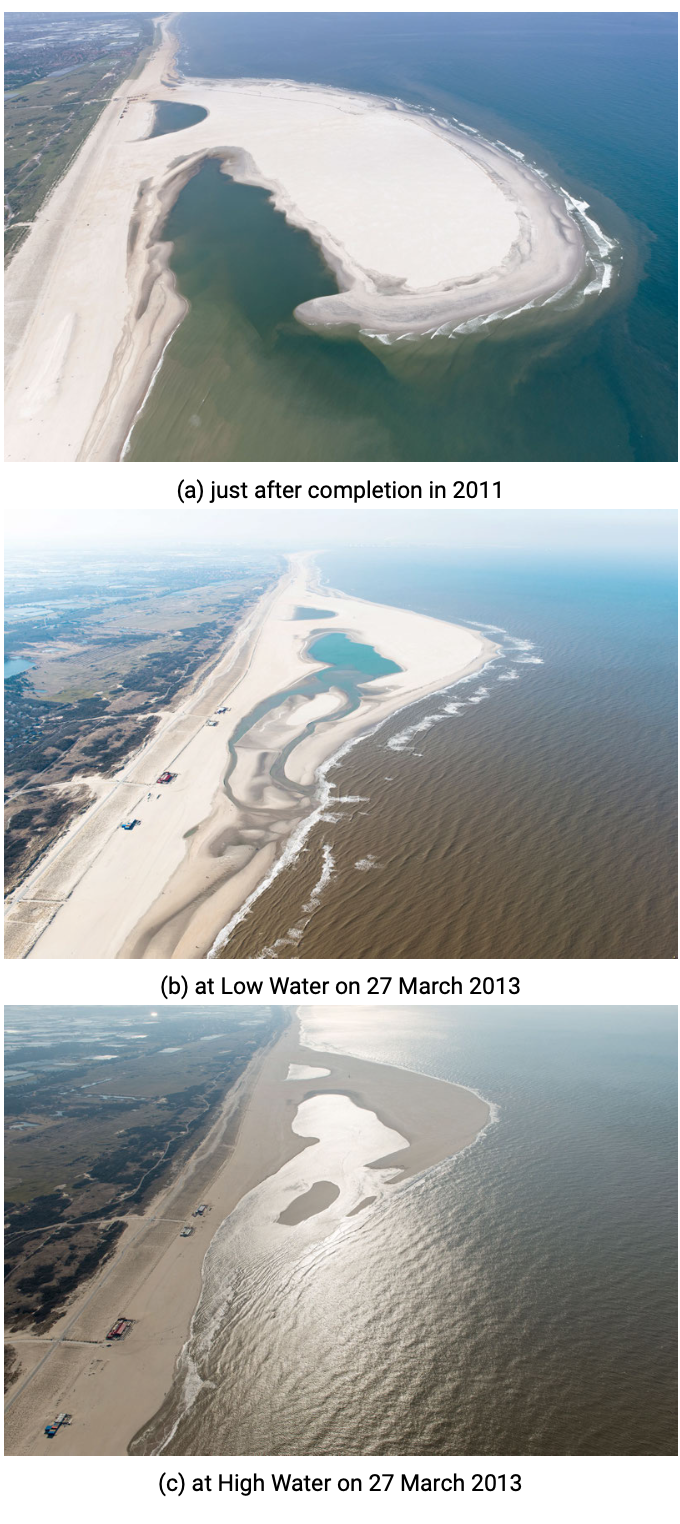10.7.6: A new nourishment strategy- the Sand Engine
- Page ID
- 16450
Nourishment strategies applied in the Netherlands have historically developed as follows. From the 1970s onward the globally common form of beach and dune nourishments, placing sand directly on the beach and dunes, was used frequently (Figs. 10.35b and 10.35d. Shoreface nourishments, initiated in the 1990s, make use of natural marine processes to redistribute the sand that is placed under water in the cross-shore direction and gradually create a wider coastal defense over time (Fig. 10.35a). This strategy is not as common globally. In the Netherlands nourishments over the last few decades are regularly executed to maintain the coastline position of 1990 of which roughly 50% are traditional beach and dune nourishments and roughly 50% shoreface nourishments. The average volume was 30 \(m^3/m/yr\) for the whole coast, while volumes per nourishment intervention varied roughly from 200000 \(m^3\) to 2000000 \(m^3\) or 200 \(m^3/m\) to 500 \(m^3/m\) with typical time intervals of 3 to 5 years.

A new nourishment intervention, comprising an unprecedented \(21.5 \times 10^6\ m^3\) concentrated mega-nourishment known as the Sand Engine, has been implemented in the Netherlands in the summer of 2011 (Stive et al., 2013). The nourishment advanced the coast locally in a clock form with a maximum advancement more than a km into the sea over a longshore distance of \(1.5\ km\) (Fig. 10.42).
This concentrated mega-nourishment exploits both marine and aeolian processes to redistribute the sand both in cross and alongshore directions. The Sand Engine nourishment is a pilot project to test the efficacy of a local mega-nourishment as a counter measure for the anticipated enhanced coastal recession in the \(21^{st}\) century. The proposed concept, a single mega-nourishment, is expected to be more efficient, economical, and environmentally friendly in the long term than traditional beach and shoreface nourishments presently being used to negate coastal recession. This local meganourishment is designed to widen the beach along a \(10\ km\) to \(20\ km\) stretch of coastline and a beach area gain of 200 ha over a 20-year period. Observations since its construction show indeed a redistribution of the sand feeding the adjacent coasts, roughly 40% toward the south and 60% toward the north. While the jury is still out on this globally unique intervention, if proven successful, it may well become an alternative global solution for combating sea-level-rise driven coastal recession on open coasts.


